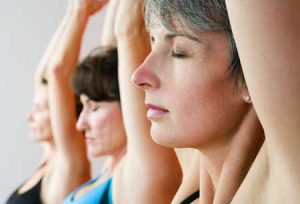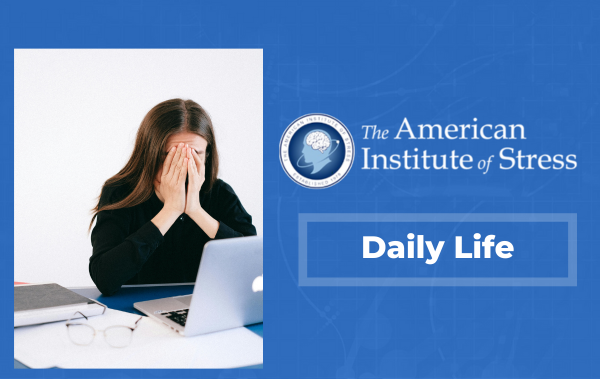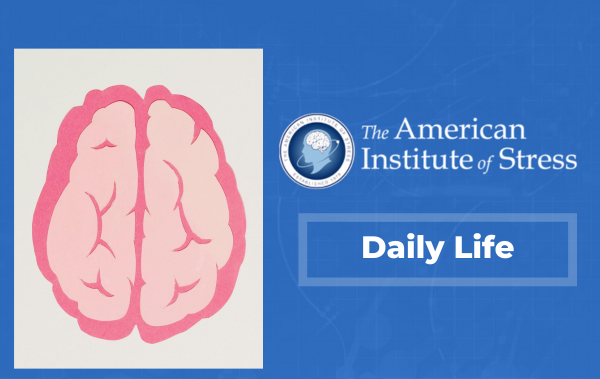Take a Deep Breath
 For many of us, relaxation means zoning out in front of the TV at the end of a stressful day. But this does little to reduce the damaging effects of stress. To effectively combat stress, we need to activate the body’s natural relaxation response. The “Relaxation Response” was discovered and coined by AIS Founding Trustee and Fellow, Dr. Herbert Benson . The relaxation response is a physical state of deep rest that changes the physical and emotional responses to stress (e.g., decreases in heart rate, blood pressure, rate of breathing, and muscle tension).
For many of us, relaxation means zoning out in front of the TV at the end of a stressful day. But this does little to reduce the damaging effects of stress. To effectively combat stress, we need to activate the body’s natural relaxation response. The “Relaxation Response” was discovered and coined by AIS Founding Trustee and Fellow, Dr. Herbert Benson . The relaxation response is a physical state of deep rest that changes the physical and emotional responses to stress (e.g., decreases in heart rate, blood pressure, rate of breathing, and muscle tension).
When eliciting the relaxation response:
• Your metabolism decreases
• Your heart beats slower and your muscles relax
• Your breathing becomes slower
• Your blood pressure decreases
• Your levels of nitric oxide are increased
At AIS we are often asked, “What is the best way to relive my stress and relax?” Our typical answer includes an explanation that just as the definition of stress is different for everyone, so are “the best” stress reduction techniques. However, there is one “Super Stress Buster” that evokes the relaxation response that we widely recommend as useful for everyone- even kids. Can you guess what it is? BREATHING! That is right, simply breathing. It is free and can be practiced anywhere- I bet you are even breathing right now! The key, of course, is focused breathing.
The relaxation response is not lying on the couch or sleeping but a mentally active process that leaves the body relaxed, calm, and focused.
Abdominal breathing for 20 to 30 minutes each day will reduce anxiety and reduce stress. Deep breathing increases the supply of oxygen to your brain and stimulates the parasympathetic nervous system, which promotes a state of calmness. Breathing techniques help you feel connected to your body—it brings your awareness away from the worries in your head and quiets your mind.
AIS endorses several breathing techniques and even a few tools that can be useful for progression in mastering your breathing, reconnecting your body and mind and stopping the stress response.
AIS Certified Techniques:
1. Quieting Response– utilizes visualization and deep breathing (a powerful combination) to stop an acute stress response in its tracks. The entire exercise only takes 6 seconds! First “smile inwardly” with your eyes and mouth and release the tension in your shoulders. This is a powerful muscle release in the places where most people hold their muscles tense. Then imagine holes in the soles of your feet. As you take a deep breath in, visualize hot air flowing through these holes moving slowly up your legs, through your abdomen and filling your lungs. Relax your muscles sequentially as the hot air moves through them up your body. When you exhale reverse the visualization so you “see” hot air coming out the same holes in your feet. Repeat throughout the day whenever you need to feel calm and relaxed.
2. Sudarshan Kriya or SKY– incorporates specific natural rhythms of the breath which harmonize the body, mind and emotions. This unique breathing technique eliminates stress, fatigue and negative emotions such as anger, frustration and depression, leaving you calm yet energized, focused yet relaxed. There are a series of exercises that you can practice to find relief. To read more about SKY visit one of our new AIS Certified organizations: The Art of Living at www.artofliving.org. We will soon post several Art of Living breath courses in our Learning Center.
3. This one is for kids—Teddy Bear Breathing– Lie on your back, place one hand on your chest and place your favorite teddy bear on your belly button. Close your eyes and relax your whole body. Breath in slowly through your nose. Your teddy bear should slowly rise, but your chest should not. When you have taken a full deep breath, hold it, count to three then slowly breathe out. Repeat a few times, until your feel relaxed.
AIS Certified Breathing Tools:
1. Stress Eraser-The StressEraser® is an award-winning portable biofeedback device that helps you learn to activate your body’s natural relaxation response in minutes — without the use of medication. Read More
2. EmWave-The emWave® 2 and the emWave® Desktop is a scientifically validated heart-rate monitoring system that facilitates learning techniques to create an optimal state in which the heart, mind and emotions are operating in-sync and balanced. Read More
Learning the basics of these breathing techniques isn’t difficult, but it does take practice. AIS stress experts recommend setting aside at least 10 to 20 minutes a day for your relaxation practice. If that sounds like a daunting commitment, remember that many of these techniques can be incorporated into your existing daily schedule—practiced at your desk over lunch or on the bus during your morning commute.
Tips for fitting relaxation techniques into your life:
• If possible, schedule a set time to practice each day. Set aside one or two periods each day. You may find that it’s easier to stick with your practice if you do it first thing in the morning, before other tasks and responsibilities get in the way.
• Practice relaxation techniques while you’re doing other things. Meditate while commuting to work on a bus or train, or waiting for a dentist appointment. Try deep breathing while you’re doing housework or mowing the lawn. Mindfulness walking can be done while exercising your dog, walking to your car, or climbing the stairs at work instead of using the elevator. Once you’ve learned techniques such as tai chi or yoga, you can practice them in your office or in the park at lunchtime.
• If you exercise, improve the relaxation benefits by adopting mindfulness. Instead of zoning out or staring at a TV as you exercise, try focusing your attention on your body. If you’re resistance training, for example, focus on coordinating your breathing with your movements and pay attention to how your body feels as you raise and lower the weights.
• Avoid practicing when you’re sleepy. These techniques can relax you so much that they can make you very sleepy, especially if it’s close to bedtime. You will get the most benefit if you practice when you’re fully awake and alert. Do not practice after eating a heavy meal or while using drugs, tobacco, or alcohol. Absolutely do not practice any relaxation technique that might make you drowsy while driving.
• Expect ups and downs. Don’t be discouraged if you skip a few days or even a few weeks. It happens. Just get started again and slowly build up to your old momentum.
I want to hear from you. Do you use focused breathing to reduce stress? What works, what doesn’t? Post a comment here or start a conversation in the AIS forum. To read more about these and other stress topics visit The American Institute of Stress’s website: www.stress.org
Contributed by: Kellie Marksberry





